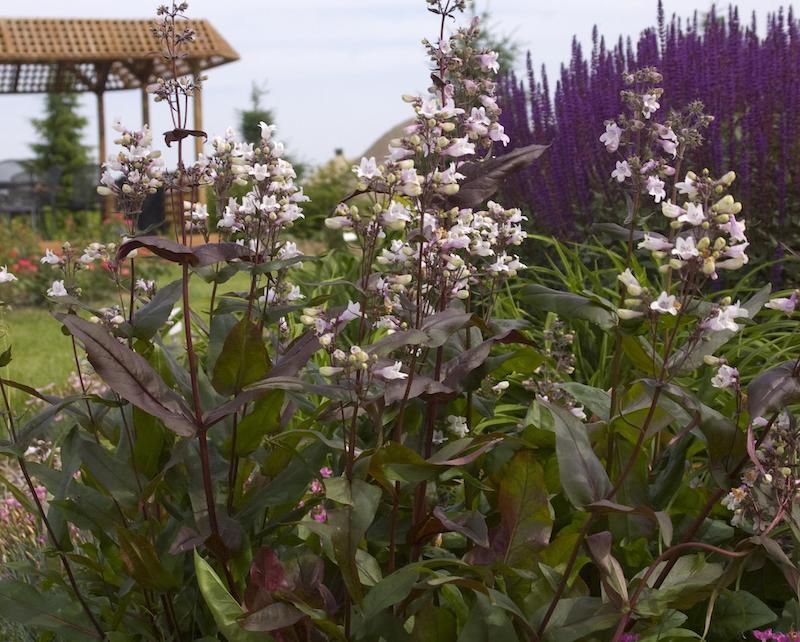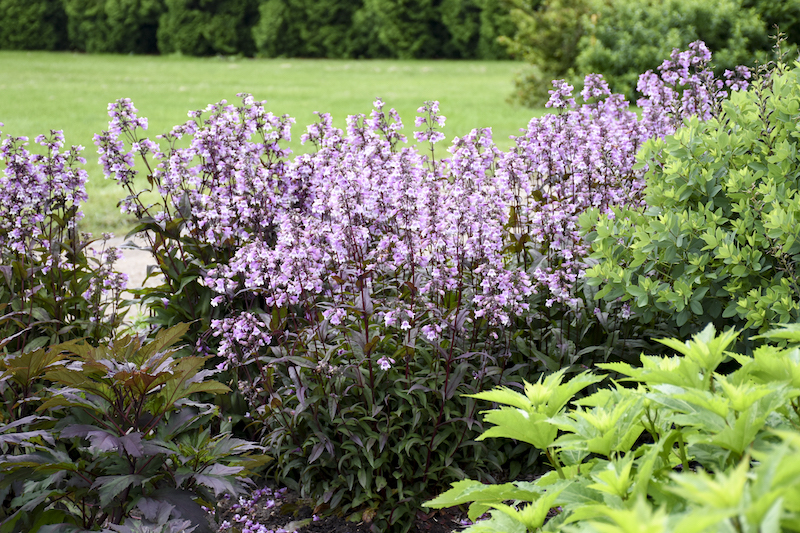Beardtongue is a flowering perennial that adds height and drama to a planting. Part of the genus Penstemon, Beardtongue features tall stems that can reach several feet high. The flower stalk is outfitted with lance-shaped green foliage near the bottom, and bell-shaped tubular flowers on the upper portions. This plant adds height at the back of beds and mass plantings while introducing color and texture. Learning the correct way to plant Beardtongue ensures healthy plants and loads of blooms all season.

What You Need To Plant Beardtongue
- Shovel
- Compost or manure
- Garden spade
- Good location
- Water source
- Mulch
Where to Plant Beardtongue
Beardtongue needs full sun to reach its full height and bloom well. Plant it in an area that receives full sun to keep the tall stems upright. If planted in low-light areas, the plant will bend or lean to seek more sunlight.
The soil must be well drained because these flowering perennials do not like soggy conditions. In their native habitat, Beardtongue lives very comfortably in sandy or rocky soil. They can tolerate some organic content, but they do not like rich soil.
Beardtongue Spacing
Space Beardtongue plants 10 to 24 inches apart, depending on the cultivar. Generally, space Beardtongue plants the same distance apart as their spread to create a natural-looking drift. These plants are clump-forming and will spread with time and proper care, so give them room to expand, especially around buildings and other plants. Even though these are tall plants, with some cultivars reaching three or four feet tall, Beardtongue does not usually need support. Plants in full sun can typically support themselves. Plants in areas with lower light or prone to high winds may benefit from support.

Steps To Plant Beardtongue
Step 1 - Select a location with full sun and sandy, well-draining soil.
Step 2 - Dig a hole twice as wide and at the same depth as the root ball.
Step 3 - Lightly amend the soil with organic compost. Beardtongue is not a heavy feeder and will benefit from a limited nutritional boost.
Step 4 - Remove the plant from the pot and gently loosen the rootball.
Step 5 - Place the rootball in the hole so the top is even with the ground. Fill the hole and gently press the soil into place.
Step 6 - Apply a thick layer of organic mulch around the base of the plant and water until the ground is saturated.
When to Plant Beardtongue
Plant Beardtongue in the spring when the temperature is consistently warm. This plant goes dormant in cold weather, so wait until there is no longer a chance of frost. Mornings are generally a good time to plant Beardtongue. You can plant in the afternoon, but give the plant plenty of water afterward, especially if it is a hot day.
Transplanting Beardtongue
Beardtongue is a clump-forming plant that will eventually outgrow its space and need to be divided and transplanted. Spring is the best time to transplant Beardtongue. Try to time the move for when there is no longer a chance of frost but the plant is not yet blooming. Beardtongue can be moved in the fall, when the plant has started to fade. Transplant well ahead of the first frost to give the plant time to settle into its new home before winter kicks in.
 |
Author Alison Cotsonas - Published 05-03-2023 |
